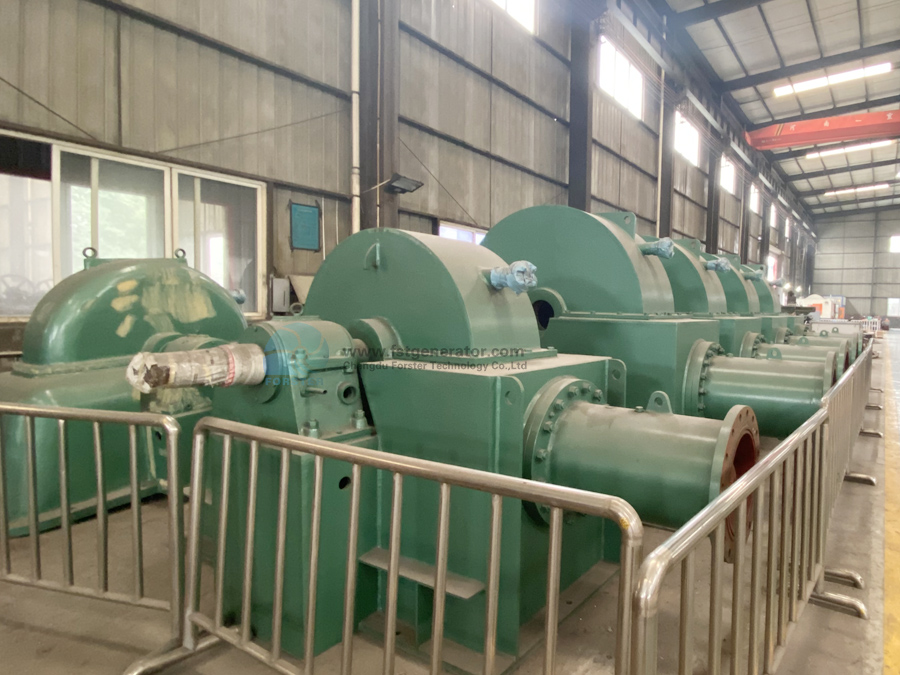Water turbine is a power machine that converts the energy of water flow into the energy of rotating machinery. It belongs to the turbine machinery of fluid machinery. As early as 100 BC, the rudiment of water turbine – water turbine appeared in China, which was used to lift irrigation and drive grain processing equipment. Most modern water turbines are installed in hydropower stations to drive generators to generate electricity. In the hydropower station, the water in the upstream reservoir is led to the hydraulic turbine through the headrace pipe to drive the turbine runner to rotate and drive the generator to generate electricity. The finished water is discharged to the downstream through the tailrace pipe. The higher the water head and the greater the discharge, the greater the output power of the hydraulic turbine.
A tubular turbine unit in a hydropower station has cavitation problem in the runner chamber of the turbine, which mainly forms cavitation with a width of 200mm and a depth of 1-6mm at the runner chamber at the water inlet and outlet of the same blade, showing cavitation belts all over the circumference. In particular, the cavitation in the upper part of the runner chamber is more prominent, with a depth of 10-20mm. The causes of cavitation in the runner chamber of the turbine are analyzed as follows:
The runner and blade of the hydropower station are made of stainless steel, and the main material of the runner chamber is Q235. Its toughness and cavitation resistance are poor. Due to the limited water storage capacity of the reservoir, the reservoir has been operating at ultra-high design head for a long time, and a large number of steam bubbles appear in the tail water. During the operation, the water flows in the hydraulic turbine through the area where the pressure is lower than the vaporization pressure. The water passing through the blade gap vaporizes and boils to produce steam bubbles, generating local impact pressure, causing periodic impact on the metal and water hammer pressure, causing repeated impact loads on the metal surface, causing material damage, As a result, the metal crystal cavitation falls off. The cavitation occurs repeatedly on the runner chamber at the inlet and outlet of the same blade. Therefore, under the operation of ultra-high water head for a long time, the cavitation gradually occurs and continues to deepen.
Aiming at the cavitation problem of the turbine runner chamber, the hydropower station was repaired by repair welding at the beginning, but serious cavitation problem was found again in the runner chamber during later maintenance. In this case, the person in charge of the enterprise contacted us and hoped that we could help solve the cavitation problem of the turbine runner chamber. Our engineers developed a targeted maintenance plan based on the detailed analysis of the equipment of the enterprise. While ensuring the repair size, we selected carbon nano polymer materials according to the operating environment of the equipment to meet the long-term operation requirements under the on-site working conditions. The on-site maintenance steps are as follows:
1. Conduct surface degreasing treatment for cavitation parts of turbine runner chamber;
2. Rust removal by sand blasting;
3. Blend Sorecun nano polymer material and apply it to the part to be repaired;
4. Solidify the material and check the repair surface.
Post time: Oct-14-2022

